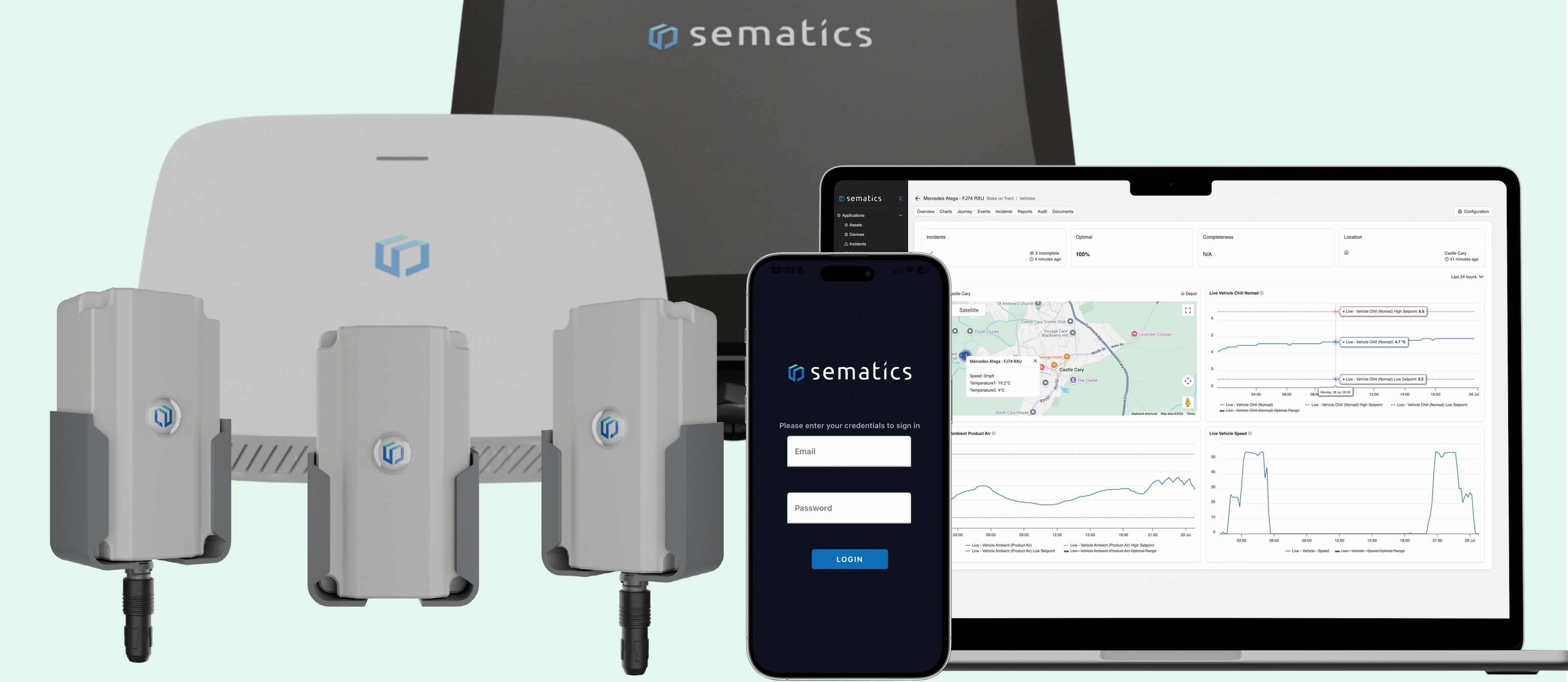Choosing the Right Monitoring Hardware for Compliance and Performance
Why Hardware Choice Matters
Monitoring hardware forms the foundation of any compliance or performance monitoring system.
If your sensors are inaccurate, unreliable, or mismatched to their environment, the integrity of your entire monitoring strategy is compromised — no matter how powerful your platform is.
This guide helps operations, compliance, and logistics teams select the right mix of sensors, transmitters, and gateways for facilities and fleets — with a focus on cold chain, pharmaceutical, healthcare, and laboratory environments.
Key Considerations When Choosing Hardware
Before deciding on specific devices, assess the following:
- Temperature Range – Are you monitoring ambient, chilled, frozen, ultra-cold, or warm assets like incubators and ovens?
- Environment – Hygienic, outdoor, laboratory, mobile, or industrial?
- Compliance Requirements – Is ISO 17025 calibration required?
- Data Transmission – LoRaWAN, BLE, wired, or cellular?
- Power Source – Battery-powered or mains-supplied?
- Number of Zones – How many probes or monitoring points are required?
- Integration Needs – Will it integrate with telematics, automation, or cloud platforms?
Fixed Monitoring Hardware (Facilities)
Fixed monitoring solutions are used for fridges, freezers, cold rooms, warm rooms, ovens, incubators, cleanrooms, and other controlled spaces.
They must be reliable in varied environments, from sterile labs to industrial cold stores.
| Device Type |
Model |
Typical Use Case |
| Node+ Embedded Temperature |
Node+ AIN |
Ambient spaces, clean areas, warm rooms, ovens, and incubators. |
| Node+ Analog |
Node+ AEA |
High-accuracy monitoring for fridges, freezers, warm assets, and ultra-cold probes (–80 °C). |
| Node+ PT100 Buffered |
Node+ BEP |
Regulatory applications requiring temperature buffering (e.g. vaccine storage, blood fridges). |
| Node+ Digital |
Node+ CED |
Digital sensor for monitoring temperature and relative humidity. |
| Node+ IO |
Node+ IO |
Door status monitoring for cold rooms, warm cabinets, fridges, or incubators. |
Fleet Monitoring Hardware (Vehicles)
Fleet monitoring ensures cargo integrity during transit — whether that’s food deliveries, pharmaceutical distribution, or mobile lab equipment.
| Device Type |
Best For |
Key Features |
| Plug-and-Play OBD Tracker |
Light vehicles, quick install |
Location, OBD data, optional temperature monitoring |
| Hardwired Tracker |
Refrigerated HGVs, trailers |
Temperature, door monitoring, CAN integration, backup power |
| Battery-Powered Asset Tracker |
Unpowered containers, passive boxes |
Temperature + GPS, long battery life |
| Camera-Enabled Tracker |
High-value or safety-critical deliveries |
Live video, driver behaviour, GPS, temperature monitoring |
Connectivity & Gateway Choices
Gateways connect devices to the cloud, enabling real-time data flow.
JTF’s Link+ range covers everything from small indoor setups to wide-area industrial coverage.
| Gateway Model |
Application |
Typical Range |
| Link+ Core |
Light industrial and small facility monitoring |
Up to 1km urban, 5km line-of-sight |
| Link+ One |
Indoor fixed monitoring |
Up to 1km urban, 20km line-of-sight |
| Link+ Pro |
Outdoor / site-wide monitoring |
Up to 2km urban, 20km line-of-sight |
Common Pitfalls to Avoid
- Selecting non-calibrated sensors in regulated environments.
- Placing gateways in poor signal locations.
- Using vehicle sensors without cold-start protection.
- Failing to standardise across sites and fleets.
- Putting sensors in worst case locations - where you don't keep stock (i.e. above a door).
Conclusion: Hardware Drives Confidence
The right monitoring hardware ensures accurate data, faster responses, fewer incidents, and smoother audits.
At JTF, we help you select, deploy, and maintain hardware that works — and keeps working.
Need help scoping your monitoring hardware?
Contact our team for a tailored recommendation based on your facility and fleet needs.
